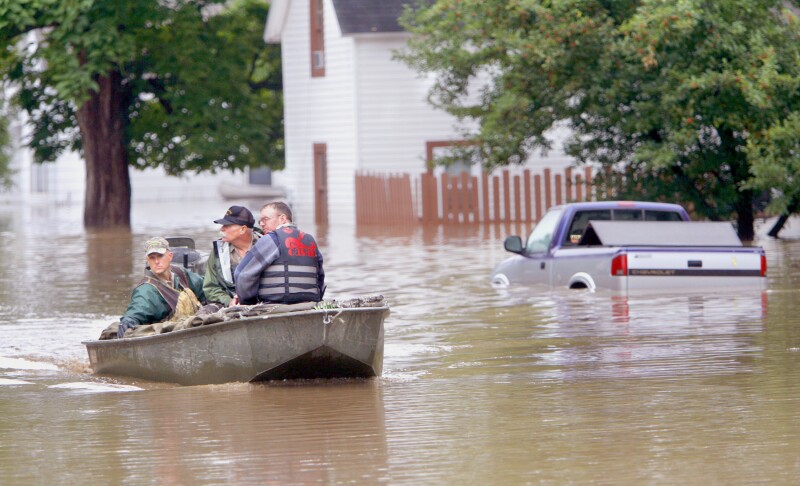Heavy rains led to catastrophic flooding in central Texas over the Fourth of July weekend, resulting in more than 100 fatalities, including 28 children. This tragedy has prompted emergency management officials across the United States, including those in Rochester, Minnesota, to reconsider their flood preparedness strategies. Rochester, which is well-protected by a robust flood control system, largely avoided the devastation experienced by surrounding areas during similar floods in 2007.
While Rochester has been insulated from historical flooding, the recent events in Texas have raised critical questions about emergency response protocols. Could a siren system have made a difference in saving lives in Texas? Capt. Jonathan Jacobson of Olmsted County Emergency Management believes that timely alerts could have provided campers and residents with crucial evacuation time as the Guadalupe River rose dramatically, exceeding 26 feet in under an hour during the night.
In Minnesota, sirens are traditionally utilized to warn citizens of tornadoes or wildfires but not for flash flooding. The Association of Minnesota Emergency Managers has yet to endorse the use of sirens for flood alerts, leaving many to wonder if this approach needs reevaluation. Jacobson emphasizes the danger of misinterpretation; when sirens sound, people instinctively seek shelter for tornadoes instead of evacuating from a flood threat.
Reflecting on past disasters, Jacobson notes the confusion that arose during the devastating wildfires in Maui, Hawaii, in 2023. When sirens activated, residents believed it was a tsunami warning and fled to higher ground, inadvertently putting themselves in the path of the fires. This underscores the importance of clear communication regarding emergency alerts.
The flooding of August 2007 in southeastern Minnesota serves as a stark reminder of the potential for disaster. Areas experienced over 15 inches of rain, leading to severe flooding that claimed seven lives and resulted in damages exceeding $200 million. In response to this calamity, counties like Winona have made significant improvements to their early warning systems, collaborating with the National Weather Service and FEMA to install river sensors that automatically alert authorities when water levels reach critical points.
Winona County Emergency Manager Ben Klinger outlined the advancements made since the 2007 floods, highlighting new technologies that enhance alert capabilities. These initiatives have improved the county’s response to weather-related threats, providing a more effective method of communication during emergencies.
In Wabasha County, concerns center around the Lake Zumbro Dam, classified as a “high hazard dam.” Emergency Director Brenda Tomlinson stated that annual drills test their emergency alert systems. They were notably tested during the 2010 flooding when continuous rainfall led to significant overflow and flooding of nearby communities.
Climate change is increasingly affecting the intensity and frequency of storms, making it vital for emergency management to adapt. The most recent National Climate Assessment indicates that much of the Midwest, including Minnesota, has experienced an increase in rainfall by 5% to 15% over the past several decades. As storms become more severe, the need for effective warning systems gains urgency.
The recent tragedy in Texas has also drawn attention to staffing cuts at key weather and climate agencies during the Trump administration, particularly at the National Oceanic and Atmospheric Administration (NOAA) and the National Weather Service. While experts confirm that timely alerts were issued during the flooding, the absence of a siren system has raised questions about preparedness and communication strategies. Local officials had previously considered implementing a siren system but ultimately declined due to cost concerns.
Moreover, the selection of camping locations along the Guadalupe River, known as “Flash Flood Alley,” has sparked additional scrutiny. Local leaders must now weigh the benefits of potential siren systems against the backdrop of budget limitations and public safety needs.
As communities across the United States reassess their preparedness in light of recent flooding disasters, the imperative for clear, effective communication and timely alerts remains paramount. The lessons from Texas and past experiences in Minnesota may shape future emergency management strategies, ensuring that lives are prioritized in the face of increasingly unpredictable weather events.





































































